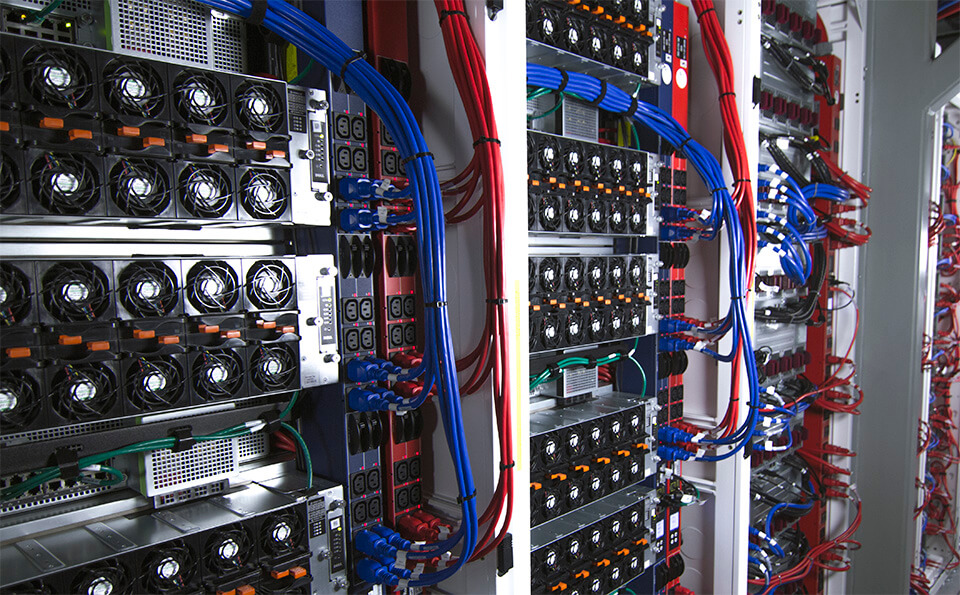部落格
主頁 » 部落格
Riding Out the Pandemic: The Importance of SmartSensors for Remote Management
Posted on March 8, 2021 by Gento

The COVID-19 pandemic has demonstrated the data center industry’s reliance on remote management. In this blog, we discuss the role of Raritan SmartSensors while looking back a year.
Will Governments Force the Data Center Industry to Become More Energy Efficient with Green Data Center Laws?
Posted on March 2, 2021 by Website Administrator
.jpg)
For the past year, the European Union (EU) has threatened to enact green data center laws including a goal of requiring data centers in Europe to be climate neutral by 2030. But in hopes of preempting government regulations, a group of European data center operators have signed a pact to self-regulate themselves.
Data Center Cabinet Load Balancing: there’s a less complicated way.
Posted on March 28, 2017 by Gento

Why do we load balance?
Without going into the complicated math, suffice it to say that load balancing in a 3 phase system is desirable. The more unbalanced a system the more problems it creates. UPS life, for one, can be affected by unbalanced systems. Although one circuit (server cabinet) being out of balance won’t have much effect, if many or all circuits on a panel are out of balance, the main circuit supplying the breaker panel will be out of balance and this can ruin your upstream UPS. There are also efficiency issues with unbalanced loads.
How is load balancing currently accomplished in a rack cabinet?
To balance a load in a cabinet, the loads of the equipment power supplies are spread across the 3 phases – L1/L2, L2/L3, L3/L1. This is done by plugging the first server (or switch/router) in an outlet wired on L1/L2, the next server on L2/L3, the next on L3/L1, then start over. The goal is to get an equal number of devices/loads on all 3 phases – or as close as possible.
This approach can quickly turn into a cabling nightmare. Most rack PDUs are linear in their phase layout of outlets – there are only three banks of outlets, one for each phase. For example, on a 36 outlet PDU, outlets 1 through 12 will be on L1/L2, 13 through 24 on L2/L3, and 25 through 36 on L3/L1. If you use the above method of balancing, and start racking the devices at the bottom U position, the third device you plug in will need to reach the top third of the PDU and the last device may have to reach back to the bottom of the PDU. In other words, a lot of crisscrossed cabling.
How do Raritan’s balance the cable and load balancing challenge?
In certain Raritan PX three-phase models the architecture gets around the cabling issue by staggering the grouping of outlets - there are at least 6 banks of outlets. For example, outlets 1 through 6 are on L1/L2, 7 through 12 on L2/L3, 13 through 18 on L3/L1, but then we start over at L1/L2 for outlets 19 through 24. (See Illustration below)
This intelligently engineered architecture results in more reliability and easier execution. The devices towards the top of the cabinet don’t need to be plugged in to the bottom of the PDU and devices at the bottom don’t need to be plugged in to the top.
Remote Office Management
Posted on January 3, 2009 by Website Administrator
Get centralized control of the IT devices in your remote offices and branch offices (ROBO).
The proliferation of branch and remote offices is a positive sign of company growth. But it can also be a tremendous challenge for IT infrastructure management:
- With limited or no dedicated IT staff, remote/branch offices often rely on headquarters-based IT administrators, or third party service providers, to fix networking and server problems
- Branch office networks can have an array of heterogeneous IT devices from multiple vendors
- Many branch offices, especially retail locations and banks, contain sensitive customer information and/or credit card data that can be vulnerable to intrusion
With hundreds, or potentially thousands, of IT assets spread out across the globe, a centralized infrastructure management solution with the proper safeguards to manage these devices is critical.
訂閱
近期活動
- New Zealand Cloud & Datacenter Convention 2022
- 3 November 2022, 9am – 4pm • Grand Millennium Hotel, Auckland, New Zealand
- Data Centre World Singapore
- 12th – 13th Oct 2022
- Korea Cloud & Datacenter Convention 2022
- 6th Oct 2022
- Philippines Cloud & Datacenter Convention 2022
- 4th Aug 2022
- JANOG50 Meeting Hokkaido
- 3th – 15th July 2022
Raritan最新新聞
- Legrand 使用兩大創新智慧型機架 PDU 重新活化資料中心產業
- Posted on May 1, 2023
- Exclusive interview丨How does Huizhou upgrade its manufacturing industry?
- Posted on December 2, 2021
- Raritan 發表 MasterConsole® 數位雙電腦切換器
- Posted on February 18, 2021
- Legrand Data, Power and Control Division Announced as Finalist in Six Categories at DCS Awards 2020
- Posted on November 9, 2020
- Raritan 新款智慧機櫃控制器 (SRC) 可智慧管理資料中心與關鍵任務設施的環境與安全性資訊
- Posted on November 9, 2020